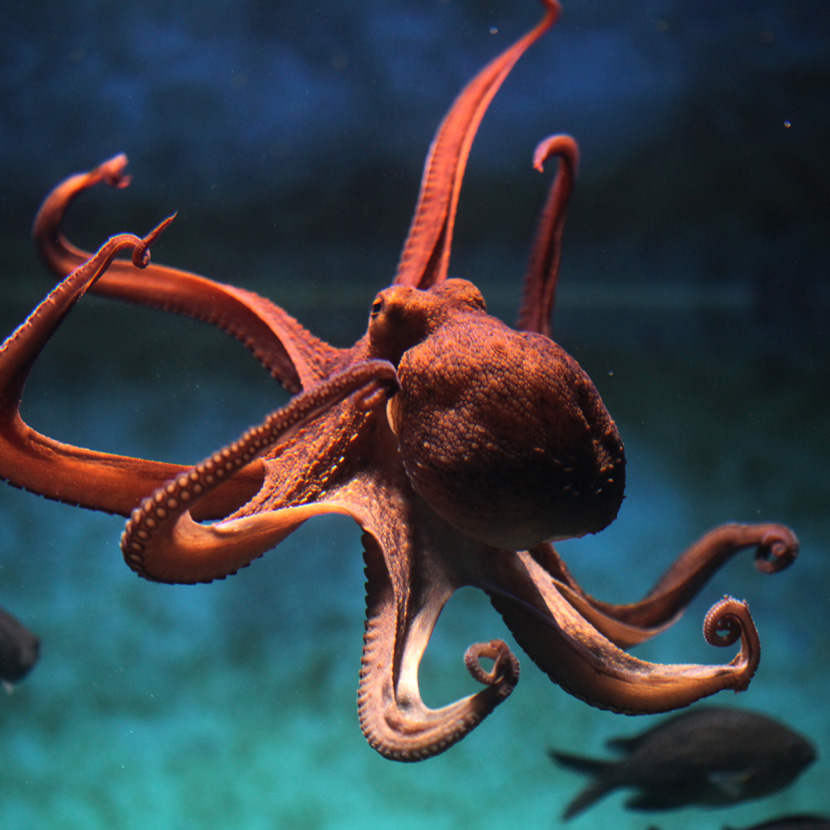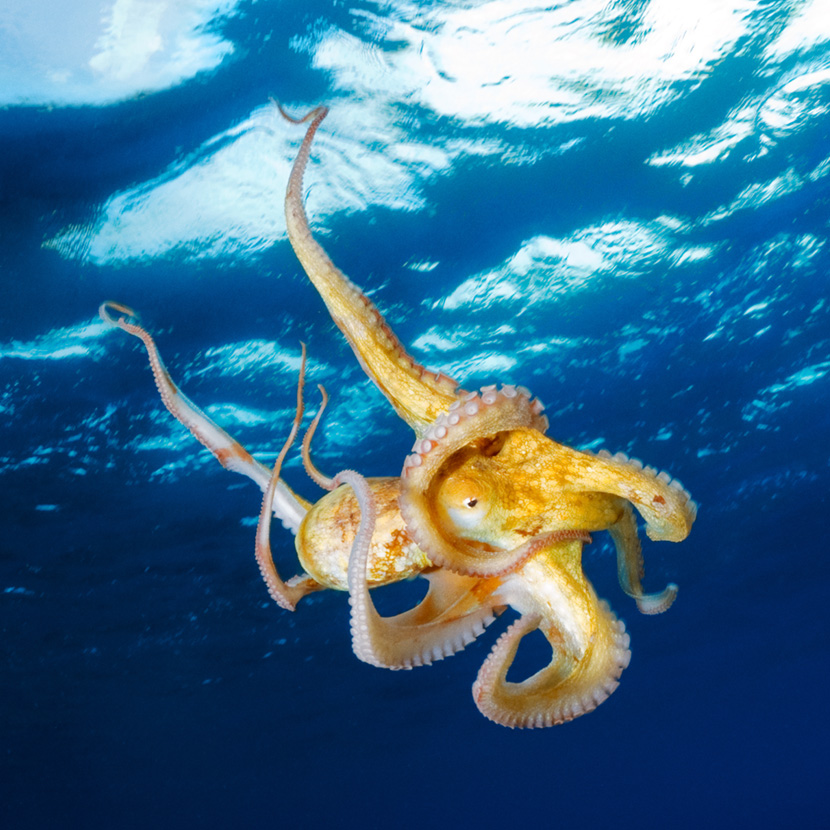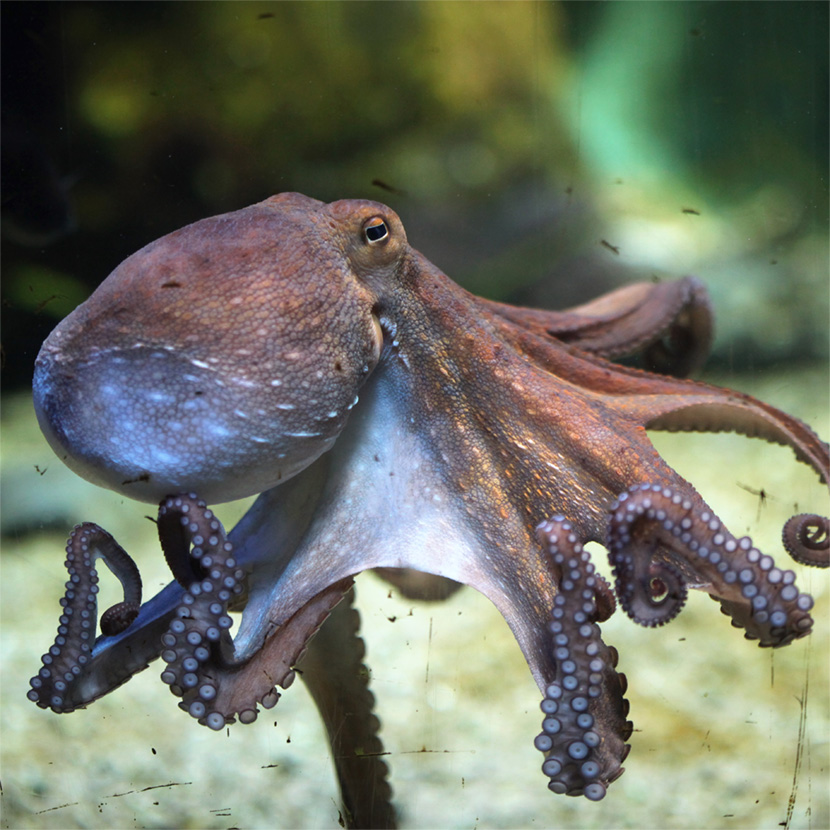ANIMAL WELFARE
Intelligence on eight legs – the octopus

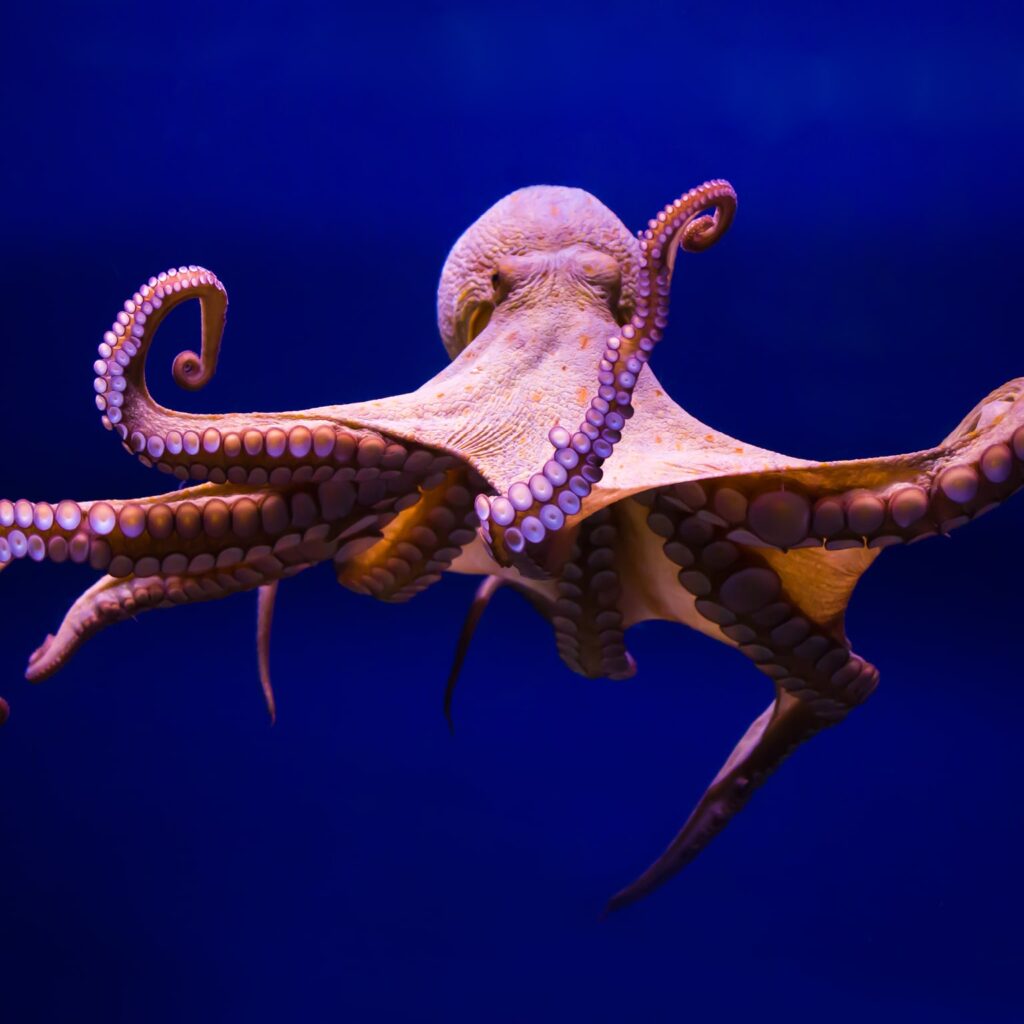
Learn more about this astonishingly intelligent sea creature
Here at velivery, animals are very close to our hearts. To help us better understand the animals we share our planet with, we want to make a habit of taking a closer look at some astounding animals and how they behave.
This time, we’re heading to the sea to take a look at the octopus. This cephalopod gets its name from the Greek words oktṓ (“eight”) and poús (“foot”) and means, loosely translated, “eight-footed”. In German, octopi are also known by the term “Kraken”, and they are classified as a species of squid. So let’s take a closer look at what these animals are capable of doing with their eight feet, and how full of tenderness and humor they are!
Octopi are some of the most astounding creatures on our planet. They are intelligent, curious and adaptable animals which are capable of solving complex problems and adjusting to changes in their environment. At first glance, they might appear strange and mysterious to some people, but if you learn more about them you’re bound to be fascinated very quickly. Even if many octopus species have not yet been described in scientific terms, their intelligence and behavior have been well-documented by marine biologists. With eight arms, nine brains, three hearts and a whole load of charm, the blue-blooded animals are little miracles of nature – as well as being self-sacrificing parents.
A short life full of sacrifice
One fully-grown female octopus can produce up to 500,000 eggs, which she watches over until they hatch. The young, each just a few millimeters long, drift away as plankton after hatching. The female, who stops eating when watching over the eggs, is so exhausted that she dies. Male octopi – which are different from the females in that they have a special mating tentacle with fewer suction cups and a sperm duct – die straight after mating.
The life expectancy of common octopi in the wild is therefore only three to four years. It also means that they only bear offspring once in their lives. Mission completed.
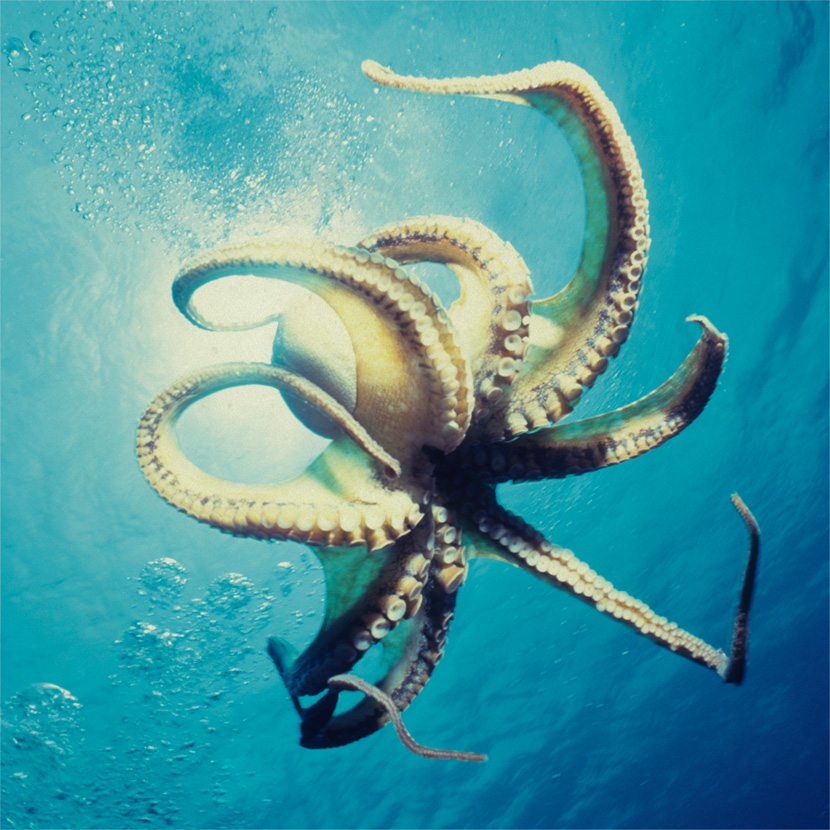
A high level of intelligence – camouflaging, detecting, using tools
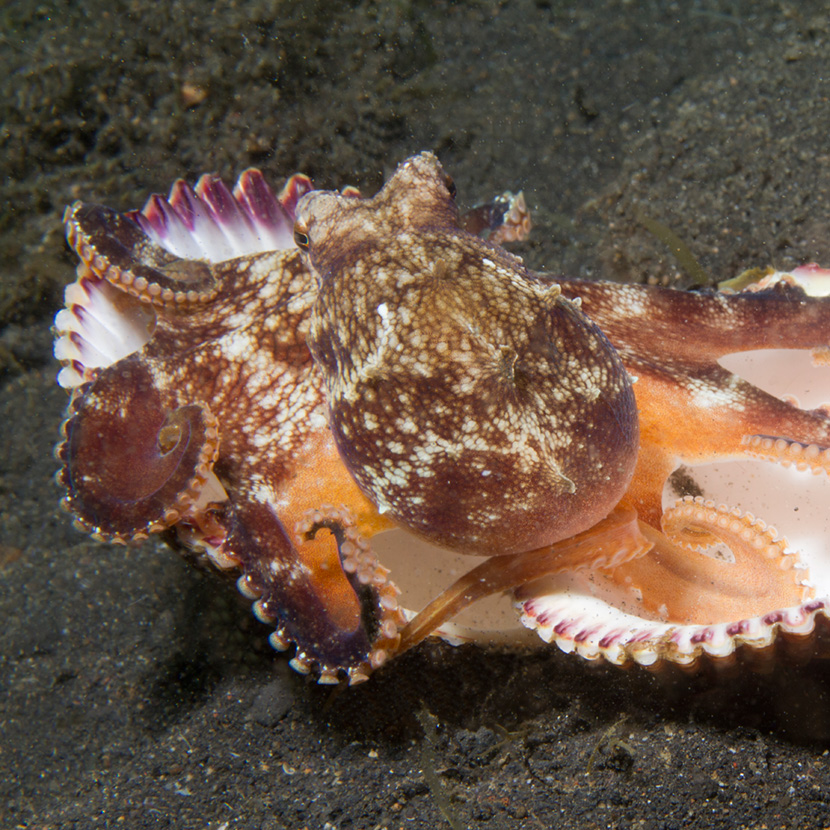
One of octopi’s most impressive achievements is that they are able to make and use tools – something which is considered by biologists as a sign of high intelligence which is otherwise found almost exclusively in mammals.
It’s absolutely astounding: they have been observed in their natural surroundings using coconut shells, seashells and other objects as protection or a hiding place. In captivity, octopi have even shown that they are able to make and use simple tools in order to reach food. In so doing, they prove that they have astounding cognitive abilities, and show that they actively use and shape their surroundings.
But that’s not all – because octopi can complete complex tasks and are able to solve problems. In experiments, they have been documented as navigating deliberately through mazes and even opening complex fasteners in order to get to food. They are also able to recognize and differentiate between shapes and colors. They use this ability to adjust to their environment and camouflage themselves. By changing their color and texture, they merge perfectly with their surroundings, which allows them to hide from predators. Not only is this behavior considered a considerable feat of intelligence – it also requires complex motor skills.
A complex brain and the power of three hearts
With all these spectacular achievements, it’s no wonder that these molluscs need a special brain, don’t you think? Their brains reach right from their heads to the tips of their eight arms/legs. One brain in the head and one in each of their arms makes nine brains. Perhaps it would be more accurate, however, to say that the octopus’s neural network covers its whole body. This makes it possible, in particular, for them to use the camouflage mechanism in their skin, as well as fine motor skills and the coordinated control of their arms.
The octopus’s heart is just as impressive: it is divided into a main heart and two so-called branchial hearts at the base of the gills.
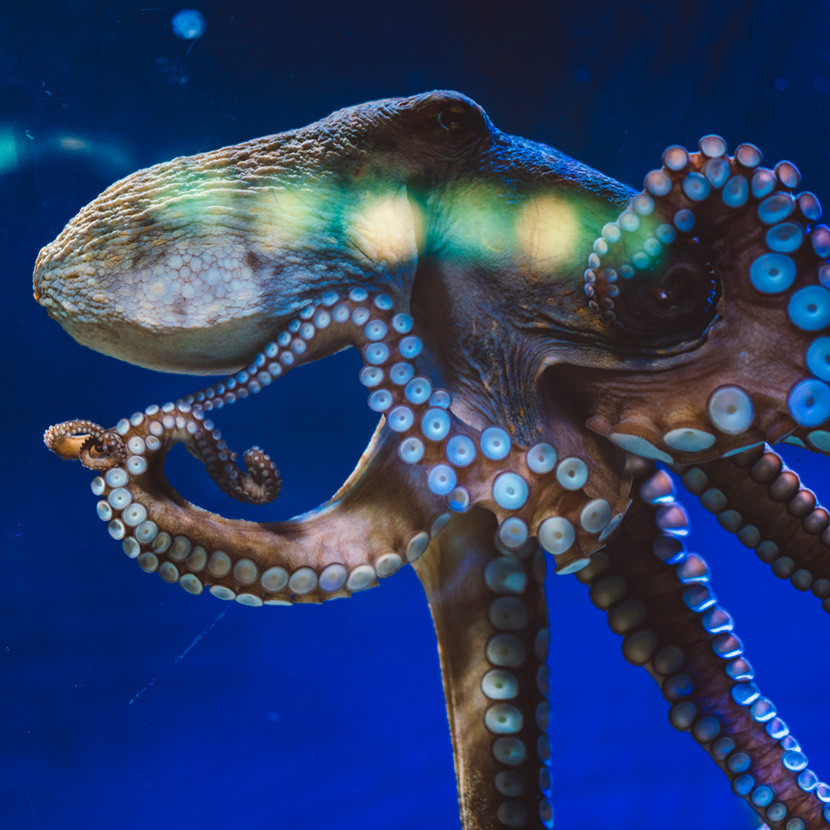
My Octopus Teacher – a film about an outsider
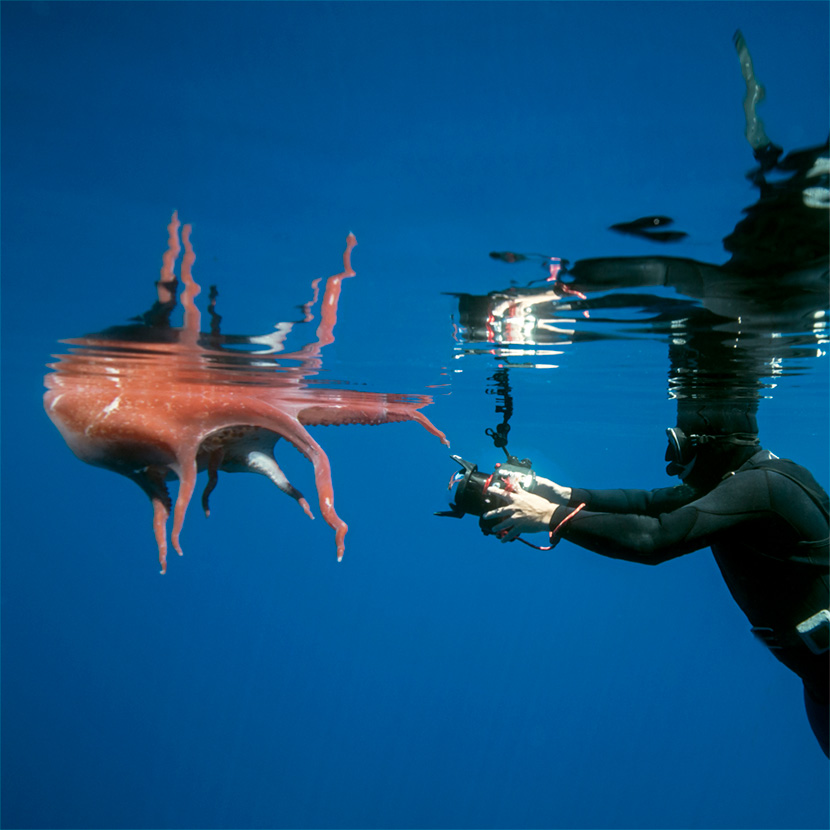
Although octopi are known for being outsiders, they do also have a pronounced social side. They are able to tell different individuals apart, and even to make friends. In experiments, octopi have shown that they are able to recognize other octopi and to remember them. These animals can also form complex relationships with humans. This is shown beautifully in the Oscar-nominated documentary “My Octopus Teacher”, which is really worth seeing.
In the forests of seaweed off the coast of South Africa, a friendship comes about between two very different individuals. In emotional imagery, the film shows how, following a period of exhaustion and feeling distant from nature, Craig Foster – a prizewinning filmmaker and passionate diver – decides to dive in the sea every day for a year, and to surrender himself fully to nature.
During this time, he meets a female octopus. Slowly but surely, trust develops between the two, and the octopus opens up a whole new world to Foster – taking him with her for more than a year on a journey full of discoveries and underwater adventures.
Through his hours of observation and interactions with the lady octopus, Foster begins to understand how she lives her surroundings – and how she survives. He learns how the octopus perceives the world around her, and which clever strategies she uses in order to get to food. And then there’s the moment when he initially thinks the octopus is hunting in a shoal of fish, until he realizes that she’s actually just playing with the shoal, and that the fish aren’t swimming away from her. Being playful and, in their own way, funny, is a surprising side which you might not expect octopi to have. Moving recordings show how the octopus specifically seeks to be physically close to Foster, and how a real connection forms between the two of them.
Furthermore, the film shows us what effects human activity is having on the environment, and how we, as a society, treat the natural world. If you’re anything like me, watching the film will make you think about our relationship to nature, and about how we can reconnect with it.
Even if the mysterious octopus seems very different to mammals or humans, we have a lot more in common than you might think. Seeing this diverse world as a whole, delighting in this huge diversity, discovering it and protecting it, should be enough to motivate anyone.
Now, let’s conclude our report about this very special sea creature with a veritable fireworks display of more remarkable facts about octopi!
8 astounding facts about octopi
1) Every octopus has a favorite arm…
…with which he/she explores objects or holes.
2) The octopus’s sharpest weapon is… his/her beak.
Would you have thought that octopi have beaks? Their mouths, which have a two-part keratin beak, are not immediately recognizable. They’re situated underneath the head. This beak works like a pair of scissors, and the octopus uses it to chop up its prey.
3) Did you know that octopi can use their suction cups to taste and smell?
The sensory cells in the octopus’s tentacles can sense not only mechanical, but also chemical stimuli. That’s what we would, in everyday language, call smelling and tasting.
4) We’ve already heard about their 9 brains and 3 hearts.
5) Blue-blooded
The blood of humans and most animals gets its red color from the iron it contains. Squid, on the other hand, have copper in their blood rather than iron (haemocyanin instead of haemoglobin). And this is what colors their blood blue. This blood has proven to be ideal for low water temperatures.
6) Squid ink
As is the case with all species of squid, octopi have an ink sac. They use this as a form of defense – by squirting the ink (a dark-colored secretion) into the water using a funnel organ (or siphon), thus clouding the view of predators. The ink, which contains a compound called tyrosinase, can irritate the eyes of the attackers, and put their sense of smell out of action.
7) Is it possible to see with one’s skin? It is – if you’re an octopus!
Photosensitive skin cells on the octopus contain a protein which is otherwise found in the visual pigments in eyes. Using these, the octopus can distinguish between light and dark, and orient itself. These cells also play a role in the octopus’s astounding ability to camouflage. The octopus is a real master of disguise, even on the most varied backgrounds. What’s more, the octopus also has conventional eyes, of course, which can see very well. This is important, because squid communicate via body language and changes in color.
8) Zooming along – quick as lightning
You must have seen images of how octopi usually get around: they can move along the seabed by propelling themselves with their arms, or swim as though weightless. When escaping from a predator, however, they use their “jet propulsion mode”. This is a kickback movement made by sucking water into their lung sac, before very quickly contracting their muscles and letting the water out again, using pressure.
